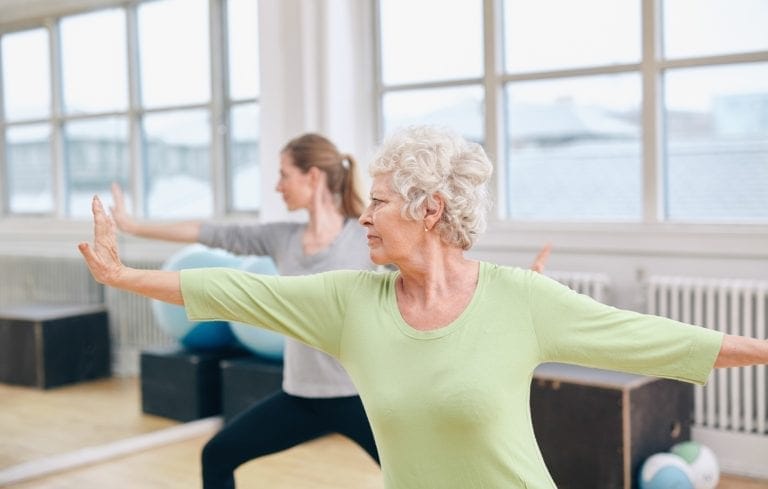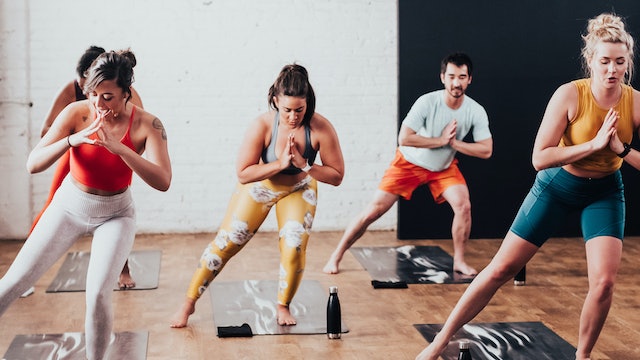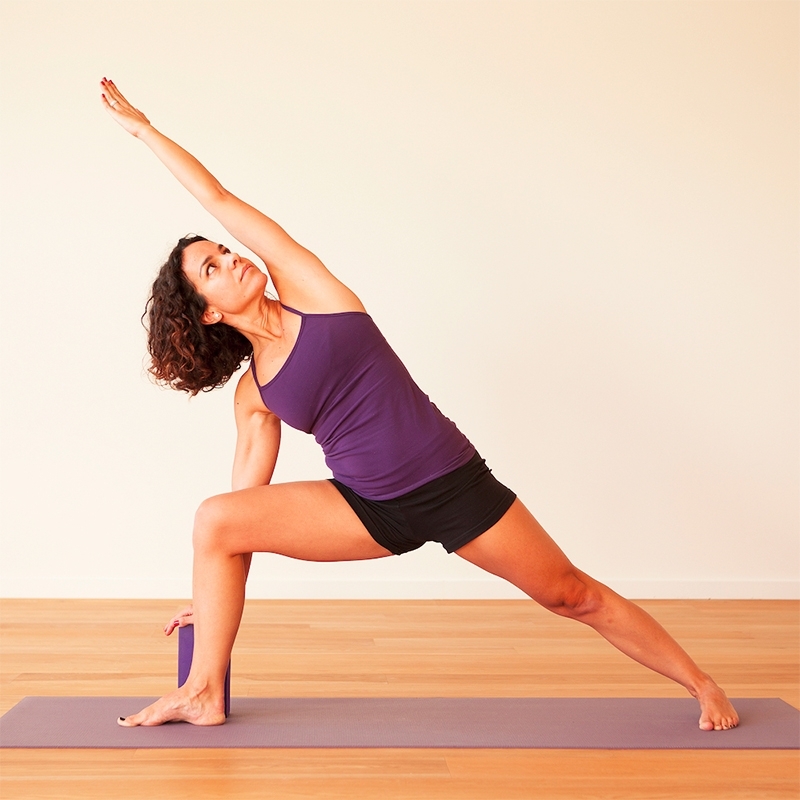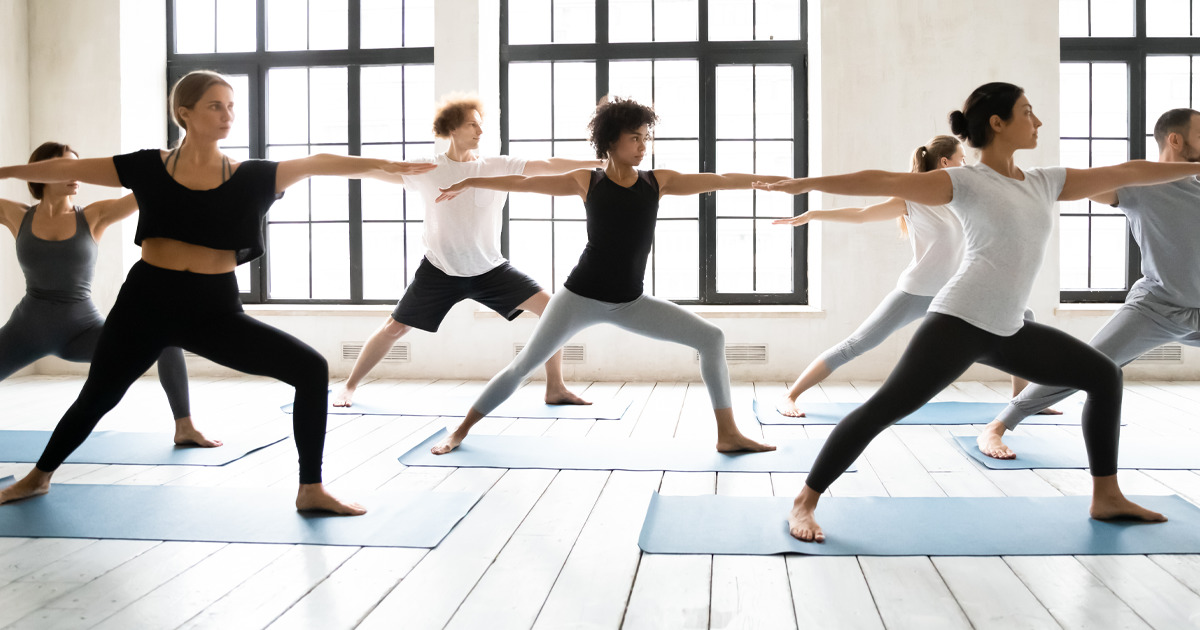
Chronic pain can greatly impact one's quality of life, making everyday activities a challenge. However, there is hope in the form of yoga and its powerful breathing exercises.
In this article, we will explore ten proven breathing techniques that have been shown to effectively manage chronic pain. From diaphragmatic breathing to alternate nostril breathing, each exercise offers a unique approach to finding relief.
So, if you're seeking freedom from pain, join us as we delve into the transformative world of yoga and breathing.
Diaphragmatic Breathing
Diaphragmatic breathing, also known as deep belly breathing, is a highly effective technique for managing chronic pain in yoga. This technique involves consciously engaging the diaphragm, a large muscle located below the lungs, to control and slow down the breath. By doing so, diaphragmatic breathing promotes relaxation, reduces stress, and provides numerous benefits for individuals suffering from chronic pain.
One of the key benefits of diaphragmatic breathing is its ability to activate the body's relaxation response. By focusing on deep, slow breaths that originate from the belly rather than shallow chest breathing, diaphragmatic breathing triggers the parasympathetic nervous system, which helps to calm the body and mind. This can significantly alleviate chronic pain by reducing muscle tension, promoting blood circulation, and enhancing the body's natural healing processes.
To practice diaphragmatic breathing, start by finding a comfortable seated position. Close your eyes and place one hand on your chest and the other on your belly. Take a slow, deep breath in through your nose, allowing your belly to rise as you fill your lungs with air. Exhale slowly through your mouth, feeling your belly sink back down. Repeat this process for several minutes, focusing on the sensation of your breath and allowing any tension or discomfort to melt away.
Incorporating diaphragmatic breathing into your yoga practice can provide immense relief from chronic pain. By cultivating a deep connection with your breath and using it as a tool for relaxation and healing, you can experience a greater sense of freedom and well-being.

Alternate Nostril Breathing
Alternate nostril breathing is a powerful breathing technique used in yoga for chronic pain management. This yogic breathing exercise involves alternating the inhalation and exhalation between the left and right nostrils. By practicing this technique, individuals can experience a sense of balance and harmony within their body and mind.
Nasal breathing plays a crucial role in regulating the nervous system and promoting relaxation. When we breathe through the nose, the air is filtered, moistened, and warmed, allowing for optimal oxygen absorption. Additionally, nasal breathing activates the parasympathetic nervous system, which helps to reduce stress and alleviate chronic pain.
During alternate nostril breathing, the dominant nostril is determined by the breath flow. By gently closing one nostril with the thumb and inhaling through the other, individuals can bring awareness to the breath and create a sense of calm. This technique can be practiced for a few minutes each day to enhance overall well-being and alleviate chronic pain.
Box Breathing
Box breathing is another effective breathing technique used in yoga for chronic pain management, providing individuals with a simple yet powerful tool to promote relaxation and alleviate discomfort. This technique involves inhaling, holding the breath, exhaling, and holding the breath again in a specific pattern that resembles the shape of a box.
Some of the benefits of box breathing include:
- Stress reduction: Box breathing activates the parasympathetic nervous system, triggering the body's relaxation response and reducing stress levels.
- Pain relief: By increasing oxygen flow to the brain and releasing endorphins, box breathing can help reduce chronic pain symptoms.
- Improved focus and mental clarity: This technique can enhance concentration and cognitive function, allowing individuals to better manage their pain.
To practice box breathing, follow these simple steps:
- Inhale deeply through your nose for a count of four.
- Hold your breath for a count of four.
- Exhale slowly through your mouth for a count of four.
- Hold your breath again for a count of four.
Repeat this cycle several times, gradually increasing the duration of each breath. Incorporating box breathing into your daily routine can provide a sense of calm and control over chronic pain, empowering you to live a life of freedom and well-being.

Lion's Breath
Lion's Breath, also known as Roaring Breath or Breath of the Lion, is a powerful breathing exercise in yoga that offers numerous benefits for chronic pain management.
By inhaling deeply and exhaling forcefully while sticking out the tongue and opening the eyes wide, Lion's Breath helps release tension, reduce stress, and increase energy levels.
This practice can be particularly helpful in relieving pain by promoting relaxation and activating the body's natural healing response.
Roaring Breath Benefits
The benefits of the roaring breath technique in yoga, also known as Lion's Breath, can be experienced through its ability to release tension and promote relaxation. This powerful breathing exercise involves a forceful exhale through the mouth while sticking out the tongue, mimicking the roar of a lion.
Here are some of the benefits of practicing roaring breath:
- Stress relief: Roaring breath helps to activate the parasympathetic nervous system, which promotes relaxation and reduces stress levels.
- Increased energy: By taking in a deep inhale and releasing it forcefully, roaring breath helps to increase oxygen levels in the body, providing a boost of energy.
- Improved focus: The intense exhale and the sound produced during roaring breath can help to clear the mind, improve concentration, and enhance mental clarity.
Incorporating roaring breath variations into your yoga practice can be a liberating experience, allowing you to let go of tension and find a sense of freedom within yourself.
Breath of the Lion
One effective breathing exercise in yoga for chronic pain management is the powerful Breath of the Lion. This breathwork technique is known for its ability to release tension and promote relaxation in the body.

The Breath of the Lion involves a forceful exhalation through the mouth, accompanied by a loud roaring sound that mimics the roar of a lion. This technique helps to activate the parasympathetic nervous system, which is responsible for rest and relaxation.
Breath Retention
Breath retention, also known as Kumbhaka in yoga, is a powerful technique that offers numerous benefits for chronic pain management. This practice involves holding the breath in after inhalation or exhalation, allowing the body and mind to experience a state of stillness and relaxation.
However, it is important to approach breath retention with caution and under the guidance of a qualified instructor, as it may not be suitable for everyone and certain safety precautions need to be followed.
Benefits of Breath Retention
Practicing breath retention in yoga offers numerous benefits for managing chronic pain. It is a powerful technique that helps individuals find relief and regain control over their pain. Here are some of the key benefits of incorporating breath retention into your yoga practice:
- Breath retention techniques for stress relief: Breath retention allows you to activate the parasympathetic nervous system, promoting relaxation and reducing stress levels. This can be particularly helpful for individuals experiencing chronic pain, as stress often exacerbates pain symptoms.
- Breath retention for improved focus and concentration: By consciously controlling your breath and holding it for short periods, you train your mind to stay focused and present. This can enhance your concentration levels, allowing you to better manage and cope with chronic pain.
- Enhanced mind-body connection: Breath retention helps deepen the mind-body connection, allowing you to become more aware of your sensations and emotions. This heightened awareness can help you better understand and address the underlying causes of your chronic pain.
Incorporating breath retention techniques into your yoga practice can offer immense benefits for managing chronic pain. By utilizing these techniques, individuals can find relief, increase focus, and cultivate a stronger mind-body connection, ultimately leading to a greater sense of freedom and well-being.
Techniques for Breath Retention
When incorporating breath retention into yoga practice, it is essential to learn and master specific techniques. These techniques, known as breathwork techniques or breath control exercises, enable individuals to optimize the benefits of breath retention for chronic pain management.
One common technique is known as kumbhaka, which involves holding the breath after inhaling or exhaling. This practice allows the body to experience a state of deep relaxation and rejuvenation.

Another technique is called antara kumbhaka, where the breath is held in a suspended state between inhalation and exhalation. This technique helps to cultivate mindfulness and increase mental clarity.
Finally, there is bahya kumbhaka, where the breath is held after exhaling. This technique helps to release tension and promote a sense of grounding.
Safety Precautions During Breath Retention
To ensure the safe practice of breath retention during yoga for chronic pain management, it is important to adhere to certain safety precautions. While breath retention can be a powerful technique for managing pain, it is essential to approach it with caution and mindfulness. Here are some safety precautions to keep in mind:
- Start with deep breathing techniques: Before attempting breath retention, it is crucial to establish a foundation of deep breathing. This helps to oxygenate the body and prepare it for the practice.
- Practice mindful breathing techniques: Mindfulness is key during breath retention. Pay attention to any discomfort or strain and adjust accordingly. Never force or push yourself beyond your limits.
- Seek guidance from a qualified instructor: If you are new to breath retention or have any underlying health conditions, it is recommended to seek guidance from a qualified yoga instructor who can provide personalized instructions and ensure your safety.
By following these safety precautions, you can practice breath retention with confidence and reap its benefits in managing chronic pain.
Calming Breath
The Calming Breath technique in yoga is an effective method for managing chronic pain. This technique focuses on deep, slow, and controlled breathing to promote relaxation and reduce stress levels.
By consciously regulating the breath, individuals can activate the body's relaxation response and release tension in the muscles, ultimately alleviating chronic pain symptoms.
Calming Breath involves taking slow, deep inhales through the nose, expanding the belly, and exhaling gently through the mouth. This deliberate and mindful breath allows for increased oxygen intake, promoting a sense of vitality and rejuvenation.

Energizing Breath
Energizing breath techniques in yoga can help increase vitality and boost energy levels.
By practicing revitalizing pranayama techniques, individuals can tap into their breath as a powerful tool for awakening and rejuvenation.
These energy-boosting breathing exercises can be beneficial for those dealing with chronic pain, providing a natural and accessible way to enhance overall well-being and manage pain symptoms.
Breath for Vitality
The technique of Ujjayi breath can be utilized in yoga to promote vitality and energy. This breathwork technique, also known as the 'Victorious Breath,' involves gentle constriction of the throat during inhalation and exhalation. By practicing Ujjayi breath, you can tap into your body's natural energy source and revitalize yourself from within.
Here are three ways in which Ujjayi breath can enhance your vitality:
- Increased oxygen intake: Ujjayi breath encourages deep and slow breathing, allowing you to take in more oxygen. This oxygenates your blood and boosts your energy levels.
- Activating the parasympathetic nervous system: Ujjayi breath stimulates the parasympathetic nervous system, which promotes relaxation and rejuvenation. This can help reduce stress and increase vitality.
- Mind-body connection: Ujjayi breath helps establish a deep connection between your mind and body. This awareness of your breath allows you to channel your energy effectively and increase your vitality.
Revitalizing Pranayama Techniques
Practicing revitalizing pranayama techniques in yoga can significantly contribute to the management of chronic pain. These techniques, also known as energizing breath, focus on deep breathing to bring about a sense of vitality and rejuvenation.
By incorporating pranayama into your yoga practice, you can experience a range of benefits that can help alleviate chronic pain. Deep breathing techniques, such as Kapalabhati (Skull Shining Breath) and Bhastrika (Bellows Breath), increase oxygen intake and improve circulation, promoting a sense of energy and alertness.

These techniques also help release tension and stress, which are often associated with chronic pain conditions. By harnessing the power of your breath, you can tap into a natural source of healing and find relief from persistent pain.
Energy-Boosting Breathing Exercises
One effective approach to manage chronic pain in yoga is through energy-boosting breathing exercises. These exercises can help increase vitality, improve focus, and reduce fatigue, allowing individuals to better cope with their pain. Incorporating breathwork for relaxation and breathwork for stress relief can provide a much-needed boost of energy and rejuvenation.
Here are three energizing breathing exercises that can be practiced in yoga:
- Kapalabhati: This rapid, forceful exhaling technique helps to awaken and energize the body by increasing oxygen supply to the brain and clearing mental fog.
- Bhastrika: Also known as bellows breath, this exercise involves forceful inhaling and exhaling, providing a burst of energy and invigorating the body.
- Ujjayi: This deep, victorious breath creates a subtle sound in the throat, promoting a sense of calmness and focus while simultaneously boosting energy levels.
Equal Breathing
Equal breathing is a technique in yoga that involves inhaling and exhaling for an equal duration of time. This practice can be highly beneficial for stress relief and improving sleep quality. By synchronizing the breath, we can create a sense of balance and calm within the body and mind.
Equal breathing helps regulate the autonomic nervous system, promoting relaxation and reducing anxiety. By focusing on the breath and making it steady and even, we can tap into the body's natural relaxation response. This technique can be particularly helpful for individuals who struggle with insomnia or have difficulty falling asleep.
Skull Shining Breath
Utilizing the technique of skull shining breath can be an effective method for managing chronic pain through the practice of yoga. This powerful breathing exercise, also known as kapalabhati pranayama, involves forceful exhalations followed by passive inhalations. The rapid and forceful exhalations help to clear the mind and energize the body, while the passive inhalations allow for relaxation and rejuvenation.
Benefits of skull shining breath include:

- Increased oxygenation: The vigorous exhalations help to expel stale air from the lungs, allowing for a fresh intake of oxygen.
- Improved circulation: The rapid movements of the diaphragm during this breath technique stimulate blood flow and enhance circulation throughout the body.
- Enhanced mental clarity: Skull shining breath helps to clear the mind, improve focus, and promote a sense of mental alertness.
In addition to these benefits, practicing skull shining breath also involves breath retention, which can help to calm the nervous system and reduce stress levels. By incorporating this technique into your yoga practice, you can experience relief from chronic pain and find a greater sense of freedom in your body and mind.
Humming Bee Breath
Continuing the exploration of effective breathing exercises for chronic pain management in yoga, how can the technique of Humming Bee Breath provide relief and relaxation?
Humming Bee Breath, also known as Bhramari Pranayama, is a powerful practice that harnesses the healing potential of vocal vibrations and sound therapy. By creating a gentle humming sound while exhaling, this technique helps to calm the mind, reduce stress, and alleviate pain.
The vibrations produced during Humming Bee Breath have a soothing effect on the nervous system, promoting a sense of tranquility and inner peace. This technique can be particularly beneficial for individuals experiencing chronic pain, as it encourages relaxation and helps to redirect the focus away from discomfort.
Frequently Asked Questions
Can These Breathing Exercises Be Practiced by Anyone, Regardless of Their Level of Yoga Experience?
Beginners can practice these breathing exercises in yoga for chronic pain management, as modifications are available to accommodate their level of experience. It is important to start slowly and listen to the body's cues for a safe and effective practice.
Are There Any Specific Breathing Techniques That Are More Effective for Managing Chronic Pain?
Breathing techniques have been shown to be effective in reducing chronic pain. Scientific evidence supports their use in pain management. Specific techniques can vary, but overall, controlled breathing and deep breathing exercises have been found to be beneficial.
How Often Should These Breathing Exercises Be Practiced to Achieve Optimal Results in Pain Management?
To achieve optimal results in pain management, practicing breathing exercises should be incorporated into a daily routine. The frequency of practice will vary depending on individual needs and preferences. Regular practice can provide numerous benefits for managing chronic pain and promoting overall well-being.

Can These Breathing Exercises Be Combined With Other Pain Management Techniques, Such as Medication or Physical Therapy?
Combining breathing exercises with other pain management techniques, such as medication or physical therapy, can enhance the effectiveness of chronic pain management. This approach integrates holistic practices with traditional medical interventions for optimal results.
Are There Any Potential Side Effects or Risks Associated With Practicing These Breathing Exercises for Chronic Pain Management?
When practicing breathing exercises for chronic pain management, it is important to be aware of potential risks and take necessary precautions. It is advisable to consult with a healthcare professional before starting any new exercise regimen.
 Business & FinanceHealth & MedicineTechnologyLifestyle & CultureScience & EnvironmentWorld NewsPrivacy PolicyTerms And Conditions
Business & FinanceHealth & MedicineTechnologyLifestyle & CultureScience & EnvironmentWorld NewsPrivacy PolicyTerms And Conditions
